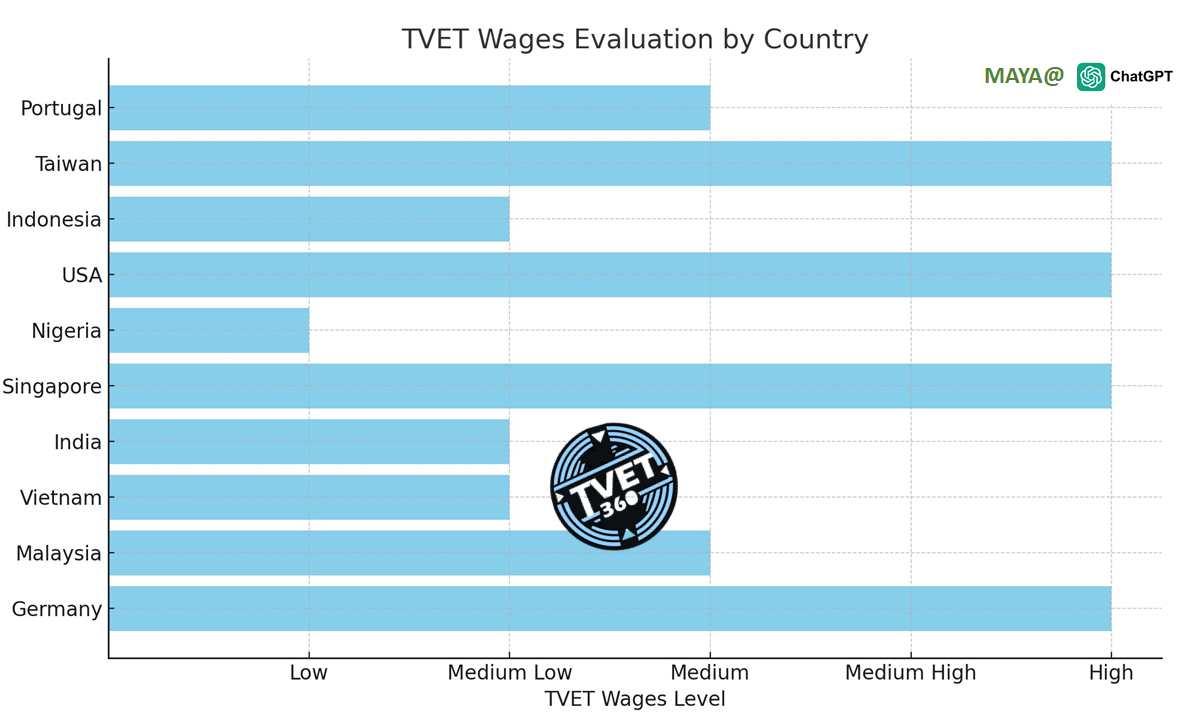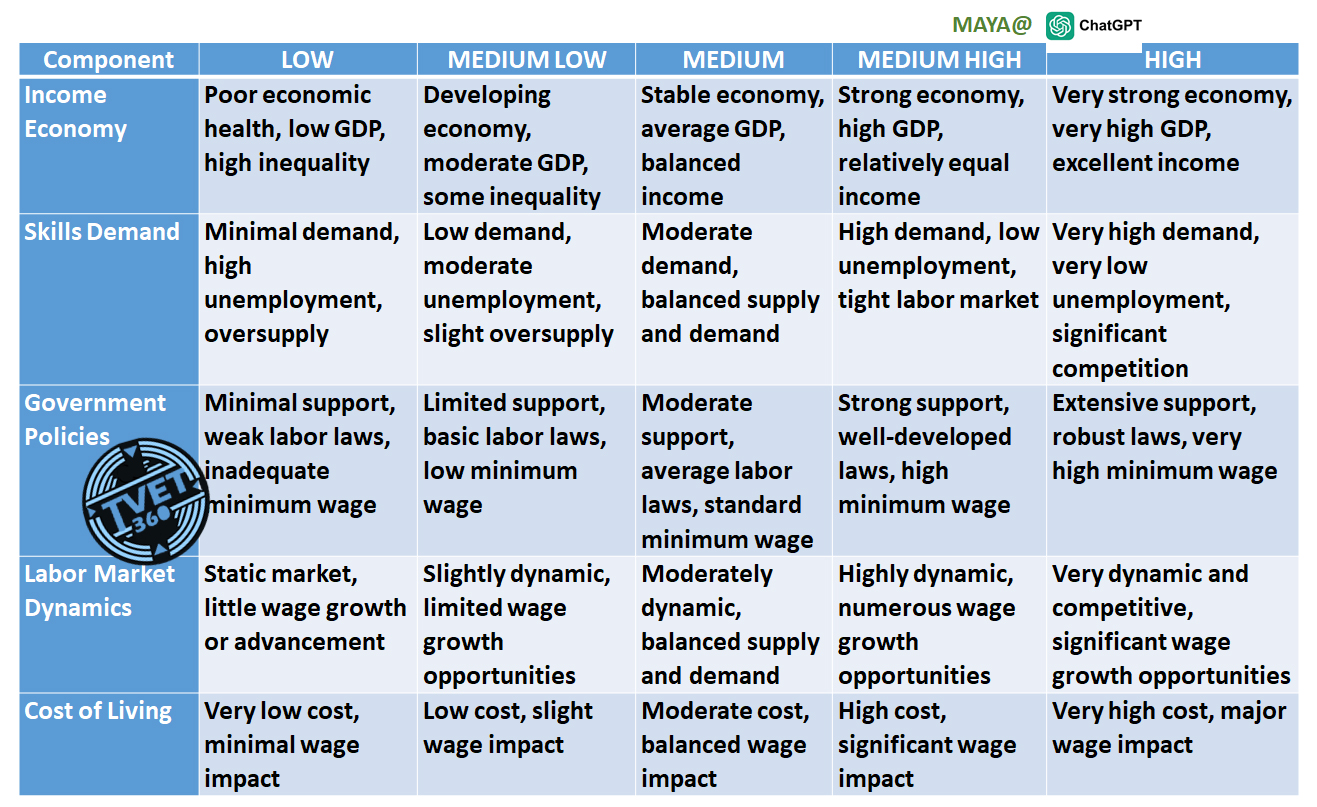13/15 - TVET Wage Analysis
 Nana Azhar
Nana Azhar
Maya, have prepared an analysis report on the TWAGE (TVET Wage) index, which evaluates several factors influencing wages, including income economy, skills demand, government policies, labor market dynamics, and cost of living. This analysis provides valuable insights for TVET strategists. It emphasizes the importance of aligning TVET programs with market demands and enhancing government support to improve wage levels and economic stability. By addressing these factors, countries can ensure better income distribution, improved living standards, and a more robust workforce prepared for in-demand careers, ultimately driving economic growth and competitiveness.
Let’s begin with the below.
Role of TVET
The TWAGE index evaluates several factors that influence wages: income economy, skills demand, government policies, labor market dynamics, and cost of living. This analysis highlights the importance of Technical and Vocational Education and Training (TVET) in these countries.
Germany, Singapore, USA, and Taiwan showcase high TVET wages, driven by robust economies, strong skills demand, supportive government policies, and dynamic labor markets. TVET plays a crucial role here by providing a skilled workforce that meets industry needs, ensuring high employability and competitive wages. Continuous alignment of TVET programs with market demands and sustained government support further enhance these positive outcomes.
Malaysia, Portugal, and Indonesia have moderate TVET wages. While their economies and government policies are supportive, there is room for improvement. Strengthening TVET programs by increasing funding, enhancing industry collaboration, and focusing on skill alignment can boost wage prospects and economic stability.
Vietnam, India, and Nigeria face challenges with lower TVET wages due to weaker economic conditions and less effective government policies. For these nations, enhancing TVET through better funding, policy support, and industry partnerships is crucial. Improving labor market dynamics and aligning skills with market needs will help elevate TVET wages and overall economic health.
In conclusion, TVET is vital in shaping workforce quality, employability, and wage levels. By addressing the unique challenges each country faces, TVET can significantly contribute to economic growth and stability, ensuring better income distribution and improved living standards.

TABLE below: The advantages and disadvantages for wage earners in nations based on their respective TVET wage levels:

Thank you for your time ❤️
Subscribe to my newsletter
Read articles from Nana Azhar directly inside your inbox. Subscribe to the newsletter, and don't miss out.
Written by
